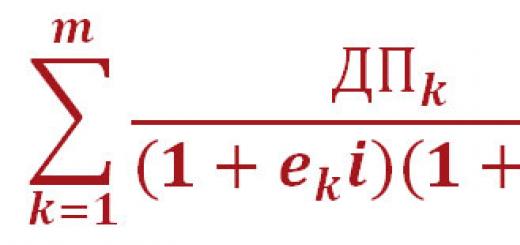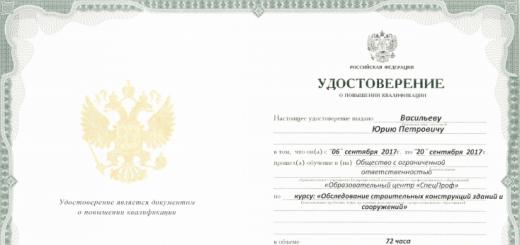Objective:
Exercise 1
No. p / p
Centers
Foreign Europe
North America
China
Japan
NIS Asia
India
Brazil
CIS
Gulf countries
Mexico
Practical work No. 11 in geography Grade 10 "Compilation of characteristics of the main centers of the modern world economy"
Objective: the formation of skills in compiling the characteristics of the centers of the world economy on the maps of the atlas.
Exercise 1 : Using Appendix 1, plot the ten major centers of the world economy on a contour map of the world.
Ten main centers of the world economy Appendix 1.
No. p / p
Centers
Foreign Europe
North America
China
Japan
NIS Asia
India
Brazil
CIS
Gulf countries
Mexico
Task 2: according to the International economic groupings of the countries of the world "
2. 1. On the contour map of the world, mark in red the states that are part of the European Union (EU). Countries: Germany, France, Italy, Netherlands, Belgium, Luxembourg. UK, Denmark, Ireland. Greece. Spain, Portugal. Austria, Sweden, Finland.
2. 2. On the contour map Overseas Asia indicate in yellow the states that are members of the Association of Southeast Asian Nations (ASEAN). Countries: Indonesia, Malaysia, Singapore, Thailand, Philippines. Brunei, Vietnam, Laos, Myanmar. Cambodia
2. 3. On the contour map of the world, indicate in blue the states that are members of the North American Free Trade Association (NAFTA). Countries: USA, Canada, Mexico.
2. 4. On the contour map of the world, mark in green the states that are part of
Latin American Integration Association (LAI). Countries:Argentina, Bolivia, Brazil, Venezuela, Colombia. Mexico, Paraguay, Peru, Uruguay, Chile, Ecuador.
2. 5. On the contour map of the world, mark in orange the states that are members of the Organization of the Petroleum Exporting Countries (OPEC). Countries: Saudi Arabia, Iraq, Iran, Kuwait,
OAE, Qatar - in southwestern Asia. Indonesia in Southeast Asia. Algeria, Libya, Nigeria in Africa. Venezuela in South America.
Video lesson “The main centers of the world economy. Integration Unions of the World” reveals in detail the processes taking place between different countries in the geographical space. The lesson will be especially useful for those who are interested in international relations, global integration processes and in the future want to connect their studies and work with this topic. The teacher will tell in detail about the main centers of world trade, modern integration unions and their role in the world economy. The lesson tells how barter, currency exchanges, UN divisions influence the political and economic situation in our global world.
Topic: Geography of branches of the world economy
Lesson:major centers of the world economy. Integration unions of the world
AT modern world close cooperation between regions and countries, a common economic, financial and trade space is becoming increasingly important.
Barter (barter exchange)- an exchange agreement, in which there is a transfer of ownership of the objects of the agreement between its parties without the use of means of payment (for example, money). Typically, barter exchange is understood as an exchange of ownership of things, goods, services with the participation of legal entities. In the world, barter accounts for about 40% of all international trade.
In addition, trading exchanges are of great importance. On the stock exchanges, goods are sold without their availability. commodity exchange- a permanent wholesale market of pure competition, in which, according to certain rules, purchase and sale transactions are made for qualitatively homogeneous and easily interchangeable goods. The first commodity exchange was founded in Bruges in 1409. The first organized commodity exchange was established in Antwerp around 1460.
Types of commodity exchanges:
1. Universal. The largest international commodity exchanges (MTB) in terms of the volume of transactions are universal. For example, the Chicago Board of Trade trades wheat, corn, oats, soybeans, soybean meal, soybean oil, gold, silver, securities. On the Tokyo Mercantile Exchange, transactions are made in gold, silver, platinum, rubber, cotton yarn, wool yarn.
2. Customized. For specialized exchanges, a narrower commodity specialization is typical, mainly by groups of goods. Such exchanges include, for example, the London Metal Exchange; New York Coffee, Sugar and Cocoa Exchange, New York Cotton Exchange.
Trade and economic organizations are of great importance for world trade. Currently, there are approximately 300 international trade and economic organizations in the world with a wide, medium and narrow composition of participants. The main role in the formation of world trade flows is played by a relatively small circle of trade and economic organizations.
Of great importance is the United Nations Conference on Trade and Development (UNCTAD), which includes 194 countries.
Rice. 1. Chicago Mercantile Exchange
The largest regional trade and economic organizations:
1. European Union.
2. Federal portal Russian Education ().
6. United Nations Conference on Trade and Development ().
The world economy is a generalized concept that covers the relationship between the economies of the countries of the world. Its subjects are such units that are able to manage capital, finance, labor resources, information on a global scale.
How the world economy system works
One can imagine a huge enterprise that operates not in a separate state, but over it, covering several countries. These entities include: national economies, transnational corporations (TNCs), regional integration associations, united economic organizations.

Rice. 1. The main trade relations of the world
The main centers of the world economy (there are about 20 of them) are industrial states with outpacing economic growth rates. There are three largest centers: USA, Japan, Foreign Europe.
Definitions of a Country's Participation in the International Economy
In order to assess the importance of the national economy of a particular region for the world economy, the main indicators of the country's participation in the international division of labor are used.
The main parameter is the gross domestic product(GDP).
TOP 4 articleswho read along with this
Gross domestic product is an indicator of the total value of all goods and services produced in all areas in the territory of a particular state.
Importance of TNC
The main role of TNCs is the distribution of factors of production (capital, labor, information, finance) between states. Settling in the country, corporations provide people with jobs, inject investments, and promote scientific development.

Fig.2. Location of branches and main office of Nokia on the map
On the other hand, TNCs have enormous power and strength. They have a very strong influence on politics and actually manage in countries with underdeveloped economies, dictating their terms.

Rice. 3. Some multinational corporations
The classification of TNCs is carried out according to several criteria:
- Country of origin. As a rule, the main office is located in this state.
- By field of activity. The most common: electronics, communications, food, beverages, cosmetics.
- Size of foreign assets. The typology is divided into the largest (from 10 billion dollars), large (from 5 to 10 billion dollars), medium (from 2 to 5 billion dollars) and small (up to 2 billion dollars).
What have we learned?
In total, 251 countries participating in international integration can be distinguished. Exactly so many states were registered in 2017 and each is involved in the global process of economic activity. The largest TNCs in the world can influence not only economic, but also political processes
major centers of the world economy. Brazil. The share of the main centers of the world economy in world GDP. Mexico.
Picture 10 from the presentation "Structure of the economy" to geography lessons on the topic "Economy"Dimensions: 892 x 663 pixels, format: jpg. To download a picture for free geography lesson, right-click on the image and click "Save Image As...". To show pictures in the lesson, you can also download the presentation “Economy Structure.ppt” for free with all the pictures in a zip archive. Archive size - 1572 KB.
Download presentationeconomy
"Geography of Industry" - Over 500 million people are employed. 3. 1) coal mining 2) iron ore 3) metallurgical 4) production of railway rolling stock 5) shipbuilding 6) textile. Old. Industry groups. Geography lesson in 10th grade. 2. Industry is the first leading branch of material production. Karezina Nina Valentinovna
"Geography of scientific and technological revolution" - LAT. Technique and technology. Accelerated conversions. Industry groupings. The science. International division of labor. Sev. Uniqueness. Training. International economic integration. Character traits. Contemporary world economy and the international division of labor. America - LAI. international economic groupings.
"Geography Global Problems" - Know: mastering the system of knowledge about the global problems of our time: natural - scientific and social. Lecture outline What does global geography study. Object - the whole Earth (processes, phenomena, patterns, problems). Form of work: lecture, frontal (1 hour). Topic: "Introduction" lesson number 1. Globalistics Global geography science academic discipline (explores) (teaches).
"Globalization" - Africa. Schemes of the structure of society Examples of countries Globalization Differentiation Integration. Periphery - pre-industrial countries. The semi-periphery is an industrial island. Russia. Oceania. Nucleus. semi-periphery - occupies an intermediate position between the core and the periphery. Globalization. At the core are such developed countries as: Japan.
"Regional division of the world" - South-West. Chad, CAR, Cameroon, Gabon, Equatorial Guinea, Congo, DRC, Angola. Country Kenya Zimbabwe Tunisia Chad. Morocco Panama Malaysia Turkey Egypt Kazakhstan Ethiopia Russia Indonesia. Countries not crossed by the equator: North. Countries located in two parts of the world: European countries: Central.
"Geography of the world economy" - The work was done by a geography teacher of the secondary school No. 530 Pukhova S.B. World market XVII-XVIII centuries. Social and economic geography of the world, Grade 10. Basic models of the world economy: Table of contents. Three-term model of the world economy. General geography of the world economy. We study the world economy.
There are 16 presentations in total in the topic
Task number 3. Choose the correct concept.
Task number 3. Which countries are indicated on the map by numbers. Enter them in the table, signing the capital:
Task number 4. What is the population of the world? - 7000154627 people
 Consider the chart “Proportion of economically developed (EDS) and developing countries(PC) in world population”, which column shows the share of economically developed countries what kind of developing.
Consider the chart “Proportion of economically developed (EDS) and developing countries(PC) in world population”, which column shows the share of economically developed countries what kind of developing.
Task number 5. Choose the correct concept.
| concept | Definition |
| - | - locality, most of whose inhabitants are employed in industry and services. |
| - | - the process of increasing the role of cities in the development of society, increasing the proportion of the urban population. |
| - | - the process of growth and development of the suburban area of large cities. |
| - | - the rapid growth of the urban population, unaccompanied by an increase in the number of jobs, which leads to the emergence of unsettled urban outskirts. |
| - | - a settlement, the majority of whose inhabitants are employed in agriculture. |
| - | - a compact grouping of settlements around a large city, united by industrial and cultural ties. |
| - | - distribution of urban forms and living conditions to rural settlements. Migration of the urban population to the countryside. |
| - | - the largest form of settlement, formed by the coalescence of a large number of neighboring agglomerations. |
Task number 6. Enter in the column opposite the name of the megalopolis, which large agglomerations are included in it and in which country it is located.
Task number 7. Sign 10 centers of the world economy.

Task number 8. Before you is a chart showing the share of 10 leading countries in world industrial production. Which countries each column corresponds to.










